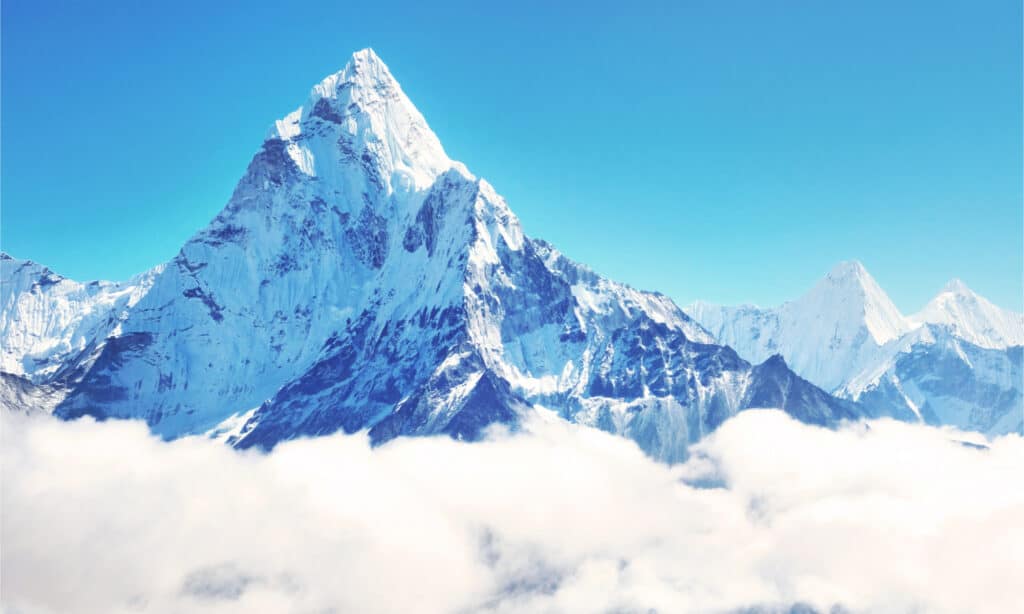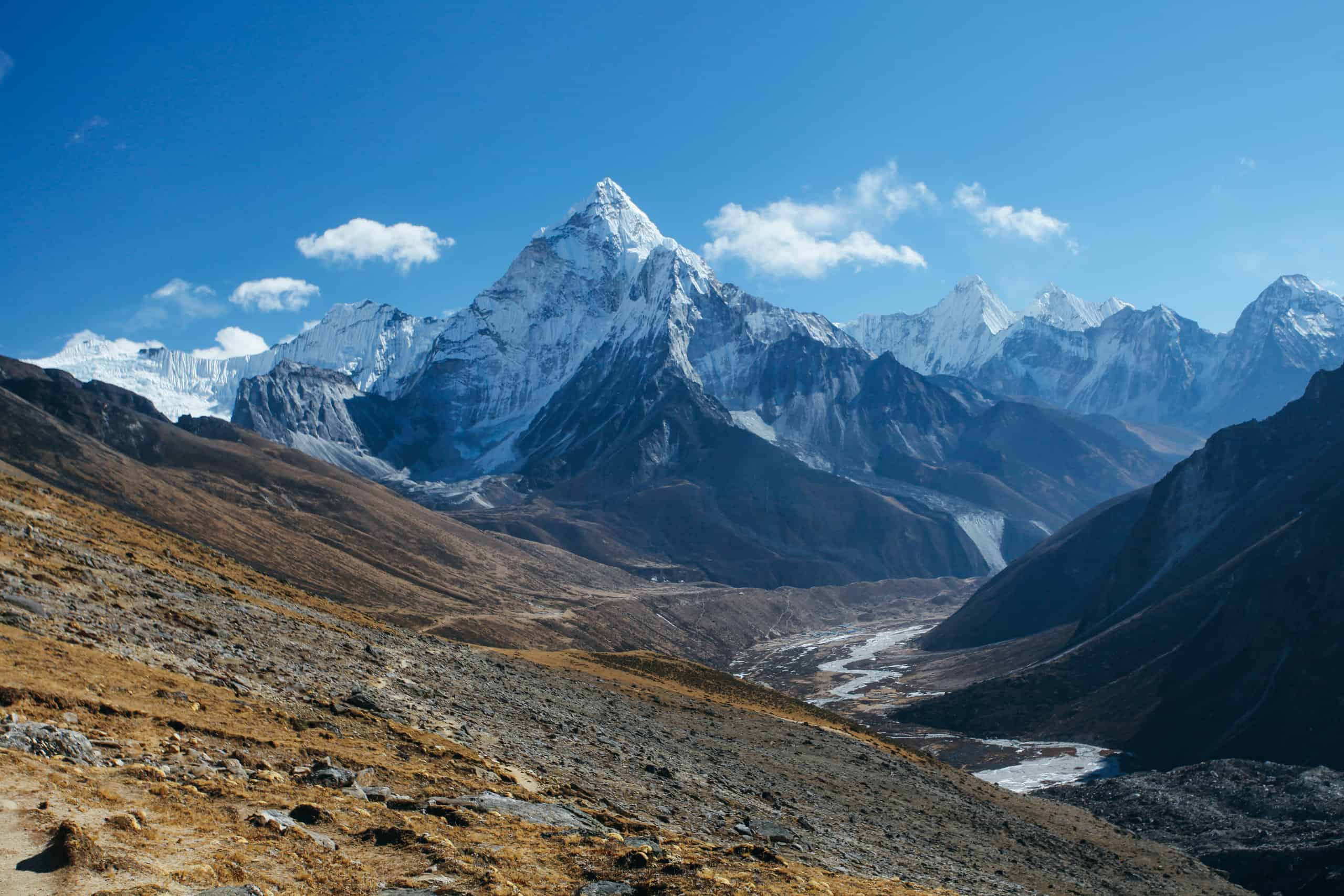Most everyone knows that Mount Everest is the tallest mountain in the world. At over 30,000 feet, the massive mountain clears the closest competitor by several thousand feet. However, not many folks take into account the way in which this elevation expresses itself.
One of these ways is through frigid cold. The higher you go up the mountain, the colder it gets. This is why tackling this peak and many others require mountaineers to equip themselves with cold-weather gear. This equipment is often required to safely climb the peaks.
Here is an overview of how cold Mount Everest gets at various elevations, as well as some information about how cold that is to other very cold places on Earth.
Cold and Elevation: An Overview

The atmosphere’s physics determines the temperature at higher elevations.
©Vixit/Shutterstock.com
Most people won’t be surprised about this, but one fact about elevation is that the temperature becomes colder on average the higher you go. The reason for this is due to the nature of our atmosphere.
Most mountains and high elevations poke through a layer in the atmosphere known as the troposphere. In this layer of the atmosphere, the temperature steadily decreases the further you get from Earth.
The temperature also frequently changes in the other layers of the atmosphere, which are far beyond the reach of any mountain. However, in most of these layers, the shifting temperatures are much more unpredictable and erratic.
The troposphere extends for seven miles above the Earth’s surface and is where all of the phenomenon that we know as “the weather” occurs. In general, going about 1000 feet higher in elevation should represent a 5.4-degree Fahrenheit change in temperature.
These temperature changes are why you can perceive ecosystem changes on tall mountains, even in desert environments. Different plants and animals are able to thrive at different elevations. This is due to the varied climatic conditions at these heights.
Thermal Inversion
The reason that the troposphere experiences colder temperatures the further that you get away from Earth is due to an interesting atmospheric phenomenon. It’s known as thermal inversion.
As opposed to the troposphere, the next layer up in the atmosphere, the stratosphere experiences a distinct shift in temperature in the opposite direction. As you go further up into the stratosphere, the temperature becomes warmer.
The reason for this thermal inversion is due to the fact that cold air sinks in most situations. This is because cold air is denser than warm air. The stratosphere also absorbs ultraviolet radiation from the sun. This in turn causes the temperature to spike in these areas.
Mount Everest Average Temperatures

On average, Mount Everest really is very cold.
©Vixit/Shutterstock.com
The temperature on Mt. Everest is highly variable depending on how high you are on the mountain and the time of the year it is. As one might be able to guess, in winter the temperature has the potential to be much colder than in the summer.
Despite this, it’s likely to be very cold at most high-elevation points of the mountain regardless of what time of year it is. Considering the mountain is over 29,000 feet tall, a significant portion of the peak is high-elevation.
The warmest month on the peak of the mountain is July, which features a relatively balmy average high of -2 Fahrenheit. On the contrary, the coldest month of January features an average high of -33 degrees Fahrenheit. Temperatures are also regularly going down into even lower depths – sometimes even reaching temperatures like -76 degrees Fahrenheit. Adding to the stress is the fact that the peak is regularly buffeted by high-velocity winds that can reach speeds of hundreds of miles per hour.
Mt. Everest basecamp is at a much lower elevation than the summit, lying at a relatively easy-to-access 16,000 feet. In January, temperatures can regularly drop to around one or zero degrees fahrenheit.
When To Climb
In general, it is seen to be preferable for climbers to attempt to climb the mountain during the months that are not part of India’s monsoon season. This has the potential to bring the tail end of tropical storms to the mountain. This greatly increases the chance of inclement weather on the mountain.
Given this, many mountaineers will attempt to summit Mount Everest sometime in between September and January. This is despite the fact that this is not necessarily the warmest time of the year. This is often the case so that the climbers can avoid the worst of the mountain’s potential for wind and storms.
Thank you for reading! Have some feedback for us? Contact the AZ Animals editorial team.








